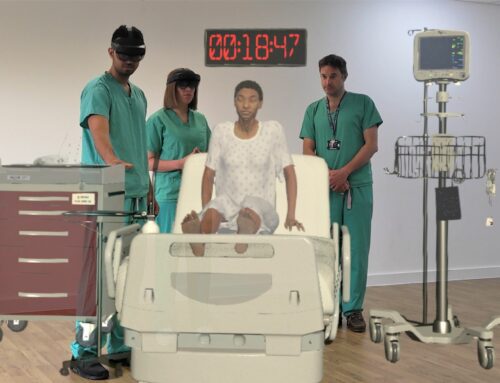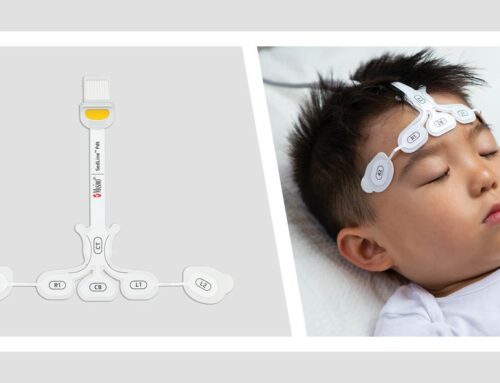By Kristin Cooke
Telemedicine has been used for years in small towns and rural areas, but the COVID-19 pandemic pushed telehealth into the forefront. Overnight, remote medical care became the safest healthcare option for patients and healthcare providers. During the spring of 2020, telehealth appointments in the US went from making up less than 5% of doctor visits to over 90%.1
In fact, in a recent survey by SatelliteInternet.com, over half of respondents said they’re more likely to seek medical advice if there is a telehealth option.
Of course, telehealth can’t reach everyone equally: you need a decent internet connection to have an e-visit with your doctor. And 27% of Americans don’t have home internet.2 Even among those with home internet service, 65% have experienced technical problems during virtual visits, and one in three are concerned about internet data caps while using telehealth services.

Benefits of telehealth
The benefits of telehealth aren’t limited to preventing the spread of illness. Telehealth helps solve the longstanding problems of provider shortages, allowing doctors and healthcare workers to care for patients who live in underserved areas. It also reduces the burden on caregivers and gives rural Americans access to top-notch specialists.
According to our 2021 survey, 60% of Americans tried telehealth for the first time during the pandemic and three out of four want to keep using it post-pandemic. 56% of survey respondents report that telehealth is most effective for routine checkups, followed closely by talk therapy and mental health counseling (53%). Telehealth was rated as the least effective for physical therapy.

The accessibility of telehealth
Convenience is the biggest reason Americans choose telehealth services, trumping safety and cost. Telehealth is simply easier and more accessible than in-person care, particularly for those who live away from cities. Over 25% of telehealth users live more than 15 miles from the nearest doctor’s office. And a long drive is an obstacle to getting regular medical care.

Telehealth is keeping Americans engaged with their health
During times of social distancing and stay at home orders, telemedicine has enabled patients to receive healthcare in a safe and effective manner. We found 54% of respondents are more likely to seek out medical advice if there is a telehealth option. Nearly two in three trust telehealth tools will inform them when a COVID-19 vaccine is available to them. And 80% of Americans rate telehealth services as equal to or better than in-person healthcare.

The future of telehealth
The future looks promising for telehealth: 76% of Americans plan to use telehealth after the pandemic. The convenience factor is key—telehealth eliminates many of the frustrations patients have with the current medical care model. But the future of telehealth will be determined not just by patient preference but also by internet access to all Americans. As America solves this critical issue, telehealth will be poised to deliver universal accessibility and convenience in healthcare.
Methodology
SatelliteInternet.com surveyed 500 Americans to learn what people think of telehealth services. We asked them how they use telehealth tools, whether they’ve considered using telehealth after the pandemic, and whether cost, quality of care, or internet access was a factor in their telehealth accessibility. Participants were from ages 16 to 54+ and from all 50 states. The survey was distributed online via Pollfish.
1. Olayiwola, J Nwando, MD, MPH, et. all, “Telehealth as a Bright Spot of the COVID-19 Pandemic: Recommendations From the Virtual Frontlines,” June 2020. Accessed January 20, 2021.
2. Statista, “Quarter of Americans Have No Internet,” April 2020. Accessed January 19, 2021.
3. Centers for Medicare & Medicaid Services website, “Medicare Telemedicine Health Care Provider Fact Sheet,” March 2020. Accessed January 20, 2021.
4. National Conference of State Legislature website, “COVID-19 Economic Relief Bill,” January 2021. Accessed January 21, 2021.
About the Author
 After graduating with a degree in English from the University of Utah, Kristin learned to geek speak while working as a technical recruiter, interviewing software developers and tech companies in the Pacific Northwest. Over the past 20 years, she has created award-winning content for technology, health, and finance companies, eventually bringing her talent to SatelliteInternet.com where she puts her research skills to work writing unbiased reviews of internet providers and tech products. Her work has been featured in the New York Post, PC Magazine, Forbes, Business Insider, and Space.com.
After graduating with a degree in English from the University of Utah, Kristin learned to geek speak while working as a technical recruiter, interviewing software developers and tech companies in the Pacific Northwest. Over the past 20 years, she has created award-winning content for technology, health, and finance companies, eventually bringing her talent to SatelliteInternet.com where she puts her research skills to work writing unbiased reviews of internet providers and tech products. Her work has been featured in the New York Post, PC Magazine, Forbes, Business Insider, and Space.com.












